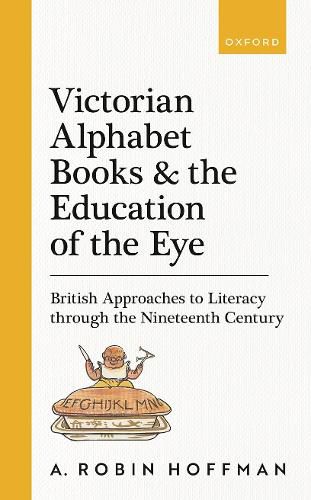Readings Newsletter
Become a Readings Member to make your shopping experience even easier.
Sign in or sign up for free!
You’re not far away from qualifying for FREE standard shipping within Australia
You’ve qualified for FREE standard shipping within Australia
The cart is loading…






Victorian Alphabet Books and the Education of the Eye shows how the familiar genre went beyond mere reading instruction to offer nineteenth-century British writers, illustrators, and publishers a site for representing and re-thinking literacy itself. This interdisciplinary study traces how individuals throughout the Victorian era deployed alphabet books to promote visual literacy or oral culture as a vital complement to textual literacy. Their strategies ranged from puns and political allusions to elaborate designs that addressed adult audiences alongside or even instead of children. As the format became more familiar in the first part of Victoria's reign, George Cruikshank, William Makepeace Thackeray, Henry Cole, and Edward Lear were quick to recognize its critical potential. This history pivots around the mid-1860s and 1870s, when the production of illustrated alphabet books exploded thanks to evolving printing technology and national education reform. Case studies of individual works and makers show how a revolution in picture books reflected and responded to laws assuring children's access to schooling. On the one hand, Socialist artist Walter Crane was able to develop alphabetical illustration from a utilitarian mid-century product into an aesthetically rich, yet accessibly priced "education of the eye." On the other hand, Kate Greenaway, Hablot Knight Browne (Phiz), and their publishers tended to leverage commercialized nostalgia against pedagogy. This survey concludes by showing how market-oriented trends and the development of photographic reproduction toward the end of the century fed into interpretations of the alphabet, including works by Rudyard Kipling and Hilaire Belloc, that reflected growing ambivalence about industrialized print culture.
$9.00 standard shipping within Australia
FREE standard shipping within Australia for orders over $100.00
Express & International shipping calculated at checkout
Victorian Alphabet Books and the Education of the Eye shows how the familiar genre went beyond mere reading instruction to offer nineteenth-century British writers, illustrators, and publishers a site for representing and re-thinking literacy itself. This interdisciplinary study traces how individuals throughout the Victorian era deployed alphabet books to promote visual literacy or oral culture as a vital complement to textual literacy. Their strategies ranged from puns and political allusions to elaborate designs that addressed adult audiences alongside or even instead of children. As the format became more familiar in the first part of Victoria's reign, George Cruikshank, William Makepeace Thackeray, Henry Cole, and Edward Lear were quick to recognize its critical potential. This history pivots around the mid-1860s and 1870s, when the production of illustrated alphabet books exploded thanks to evolving printing technology and national education reform. Case studies of individual works and makers show how a revolution in picture books reflected and responded to laws assuring children's access to schooling. On the one hand, Socialist artist Walter Crane was able to develop alphabetical illustration from a utilitarian mid-century product into an aesthetically rich, yet accessibly priced "education of the eye." On the other hand, Kate Greenaway, Hablot Knight Browne (Phiz), and their publishers tended to leverage commercialized nostalgia against pedagogy. This survey concludes by showing how market-oriented trends and the development of photographic reproduction toward the end of the century fed into interpretations of the alphabet, including works by Rudyard Kipling and Hilaire Belloc, that reflected growing ambivalence about industrialized print culture.